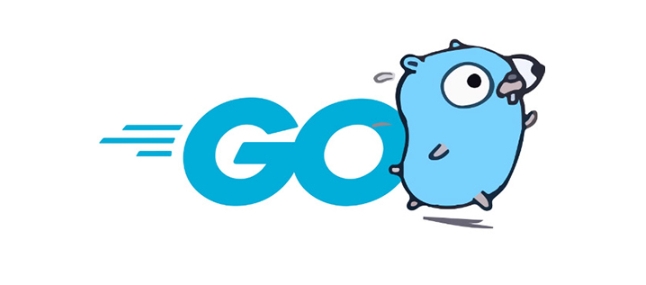How to use struct tags for JSON marshaling in Go
Aug 07, 2025 pm 04:50 PMStruct tags in Go are string annotations that control how struct fields are marshaled to and from JSON; 1. Use json:"fieldname" to customize the JSON key name, 2. Add ,omitempty to omit fields with zero values like empty strings or 0, 3. Use pointers with omitempty to handle nullable fields, 4. Use json:"-" to ignore a field entirely during marshaling, 5. Be cautious with omitempty on booleans and numeric fields where zero is a valid value, 6. Apply tags to nested or embedded structs normally, and 7. For complex cases, implement MarshalJSON, but struct tags suffice for most JSON formatting needs, ensuring clean separation between internal structs and external APIs.

In Go, struct tags are a powerful feature that let you control how struct fields are marshaled and unmarshaled to and from JSON. When working with JSON data—such as building APIs or reading configuration files—you’ll often need to customize the field names or behavior during serialization. This is where struct tags come in.

What are struct tags?
Struct tags are string annotations attached to struct fields that provide metadata. For JSON marshaling, the json tag tells the encoding/json package how to handle each field.
Here’s a basic example:

type User struct {
Name string `json:"name"`
Email string `json:"email"`
Age int `json:"age"`
}When this struct is marshaled to JSON using json.Marshal, the output will use the lowercase field names as specified in the tags:
{"name":"John","email":"john@example.com","age":30}Without the tags, the field names would still be used as-is (since Go exports fields with capital letters), but they’d appear in JSON as "Name", "Email", etc., which is often not desired in JSON APIs.

Common JSON tag options
The json tag supports several options that modify how fields are handled.
1. Customize field names
You can map a Go field to a different JSON key:
type Product struct {
ID int `json:"product_id"`
Price float64 `json:"price_usd"`
InStock bool `json:"in_stock"`
}This produces:
{"product_id":101,"price_usd":19.99,"in_stock":true}2. Omit empty fields
Use the omitempty option to exclude fields when they have zero values (e.g., zero, nil, empty string):
type User struct {
Name string `json:"name"`
Email string `json:"email,omitempty"`
Age int `json:"age,omitempty"`
}If Email is an empty string or Age is 0, those fields will be omitted from the JSON output.
Example:
u := User{Name: "Alice", Email: "", Age: 0}
data, _ := json.Marshal(u)
fmt.Println(string(data))
// Output: {"name":"Alice"}3. Handle optional or nullable fields with pointers
omitempty works well with pointers or interface types. If a field is a pointer and is nil, it can be omitted.
type User struct {
Name string `json:"name"`
Nickname *string `json:"nickname,omitempty"`
}If Nickname is nil, it won’t appear in the output.
4. Ignore fields entirely
Use the - dash to completely ignore a field during JSON marshaling:
type User struct {
Name string `json:"name"`
Password string `json:"-"`
}The Password field won’t be included in the JSON output, even if it has a value.
Advanced use cases
5. Omitting false booleans or zero values
Be careful: omitempty omits fields when they are zero values. For booleans, false is the zero value, so:
type Flags struct {
IsActive bool `json:"is_active,omitempty"`
}If IsActive is false, it will be omitted. If you always want the field to appear (as true or false), remove omitempty.
6. Nested structs and embedding
Tags work the same way with nested or embedded structs:
type Address struct {
City string `json:"city"`
Zip string `json:"zip"`
}
type User struct {
Name string `json:"name"`
Address Address `json:"address"`
}Output:
{
"name": "Bob",
"address": {
"city": "Seattle",
"zip": "98101"
}
}7. Custom marshaling with MarshalJSON
For more complex cases (like formatting dates or handling polymorphic types), you can implement the json.Marshaler interface on your type, but struct tags are sufficient for most naming and omission needs.
Key takeaways
- Use
json:"fieldname"to control the JSON key name. - Add
,omitemptyto skip zero-value fields. - Use
json:"-"to ignore a field completely. - Be cautious with
omitemptyon booleans and numeric fields where zero is a valid value. - Tags only work on exported (capitalized) fields.
Struct tags are simple but essential for clean JSON handling in Go APIs. They help you separate internal struct design from external JSON representation, making your code more maintainable and your APIs more consistent.
Basically, just remember: tag your exported fields, use omitempty wisely, and test your JSON output.
The above is the detailed content of How to use struct tags for JSON marshaling in Go. For more information, please follow other related articles on the PHP Chinese website!

Hot AI Tools

Undress AI Tool
Undress images for free

Undresser.AI Undress
AI-powered app for creating realistic nude photos

AI Clothes Remover
Online AI tool for removing clothes from photos.

Clothoff.io
AI clothes remover

Video Face Swap
Swap faces in any video effortlessly with our completely free AI face swap tool!

Hot Article

Hot Tools

Notepad++7.3.1
Easy-to-use and free code editor

SublimeText3 Chinese version
Chinese version, very easy to use

Zend Studio 13.0.1
Powerful PHP integrated development environment

Dreamweaver CS6
Visual web development tools

SublimeText3 Mac version
God-level code editing software (SublimeText3)
 What is the standard project layout for a Go application?
Aug 02, 2025 pm 02:31 PM
What is the standard project layout for a Go application?
Aug 02, 2025 pm 02:31 PM
The answer is: Go applications do not have a mandatory project layout, but the community generally adopts a standard structure to improve maintainability and scalability. 1.cmd/ stores the program entrance, each subdirectory corresponds to an executable file, such as cmd/myapp/main.go; 2.internal/ stores private code, cannot be imported by external modules, and is used to encapsulate business logic and services; 3.pkg/ stores publicly reusable libraries for importing other projects; 4.api/ optionally stores OpenAPI, Protobuf and other API definition files; 5.config/, scripts/, and web/ store configuration files, scripts and web resources respectively; 6. The root directory contains go.mod and go.sum
 How do you read a file line by line in Go?
Aug 02, 2025 am 05:17 AM
How do you read a file line by line in Go?
Aug 02, 2025 am 05:17 AM
Using bufio.Scanner is the most common and efficient method in Go to read files line by line, and is suitable for handling scenarios such as large files, log parsing or configuration files. 1. Open the file using os.Open and make sure to close the file via deferfile.Close(). 2. Create a scanner instance through bufio.NewScanner. 3. Call scanner.Scan() in the for loop to read line by line until false is returned to indicate that the end of the file is reached or an error occurs. 4. Use scanner.Text() to get the current line content (excluding newline characters). 5. Check scanner.Err() after the loop is over to catch possible read errors. This method has memory effect
 How do you use conditional statements like if-else in Go?
Aug 02, 2025 pm 03:16 PM
How do you use conditional statements like if-else in Go?
Aug 02, 2025 pm 03:16 PM
The if-else statement in Go does not require brackets but must use curly braces. It supports initializing variables in if to limit scope. The conditions can be judged through the elseif chain, which is often used for error checking. The combination of variable declaration and conditions can improve the simplicity and security of the code.
 How do you handle routing in a Go web application?
Aug 02, 2025 am 06:49 AM
How do you handle routing in a Go web application?
Aug 02, 2025 am 06:49 AM
Routing in Go applications depends on project complexity. 1. The standard library net/httpServeMux is suitable for simple applications, without external dependencies and is lightweight, but does not support URL parameters and advanced matching; 2. Third-party routers such as Chi provide middleware, path parameters and nested routing, which is suitable for modular design; 3. Gin has excellent performance, built-in JSON processing and rich functions, which is suitable for APIs and microservices. It should be selected based on whether flexibility, performance or functional integration is required. Small projects use standard libraries, medium and large projects recommend Chi or Gin, and finally achieve smooth expansion from simple to complex.
 How do you parse command-line flags in Go?
Aug 02, 2025 pm 04:24 PM
How do you parse command-line flags in Go?
Aug 02, 2025 pm 04:24 PM
Go's flag package can easily parse command line parameters. 1. Use flag.Type() to define type flags such as strings, integers, and booleans; 2. You can parse flags to variables through flag.TypeVar() to avoid pointer operations; 3. After calling flag.Parse(), use flag.Args() to obtain subsequent positional parameters; 4. Implementing the flag.Value interface can support custom types to meet most simple CLI requirements. Complex scenarios can be replaced by spf13/cobra library.
 How do you declare constants in Go?
Aug 02, 2025 pm 04:21 PM
How do you declare constants in Go?
Aug 02, 2025 pm 04:21 PM
In Go, constants are declared using the const keyword, and the value cannot be changed, and can be of no type or type; 1. A single constant declaration such as constPi=3.14159; 2. Multiple constant declarations in the block are such as const(Pi=3.14159; Language="Go"; IsCool=true); 3. Explicit type constants such as constSecondsInMinuteint=60; 4. Use iota to generate enumeration values, such as const(Sunday=iota;Monday;Tuesday) will assign values 0, 1, and 2 in sequence, and iota can be used for expressions such as bit operations; constants must determine the value at compile time,
 What does the go run command do?
Aug 03, 2025 am 03:49 AM
What does the go run command do?
Aug 03, 2025 am 03:49 AM
gorun is a command for quickly compiling and executing Go programs. 1. It completes compilation and running in one step, generates temporary executable files and deletes them after the program is finished; 2. It is suitable for independent programs containing main functions, which are easy to develop and test; 3. It supports multi-file operation, and can be executed through gorun*.go or lists all files; 4. It automatically processes dependencies and uses the module system to parse external packages; 5. It is not suitable for libraries or packages, and does not generate persistent binary files. Therefore, it is suitable for rapid testing during scripts, learning and frequent modifications. It is an efficient and concise way of running.
 How to connect to a SQL database in Go?
Aug 03, 2025 am 09:31 AM
How to connect to a SQL database in Go?
Aug 03, 2025 am 09:31 AM
To connect to SQL databases in Go, you need to use the database/sql package and a specific database driver. 1. Import database/sql packages and drivers (such as github.com/go-sql-driver/mysql), note that underscores before the drivers indicate that they are only used for initialization; 2. Use sql.Open("mysql","user:password@tcp(localhost:3306)/dbname") to create a database handle, and call db.Ping() to verify the connection; 3. Use db.Query() to execute query, and db.Exec() to execute






